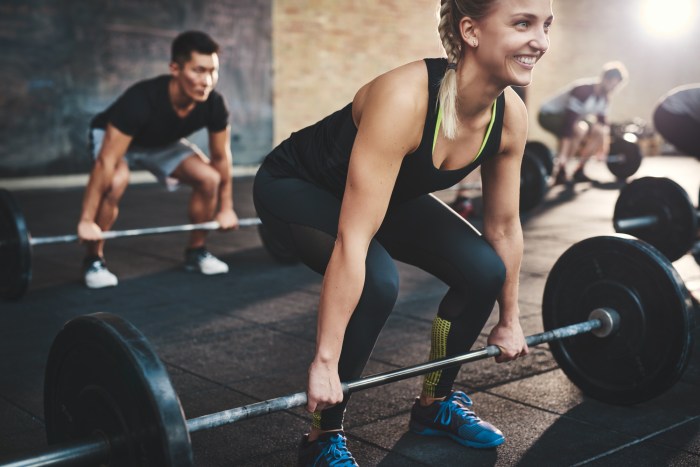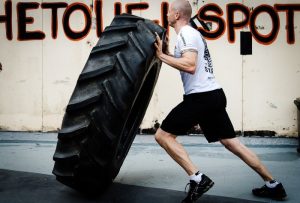
Ready to ditch the treadmill monotony and embrace the exhilarating chaos of HIIT? Forget endless hours on the elliptical; HIIT workouts (High-Intensity Interval Training) are the turbocharged answer to your fitness prayers. Think short bursts of intense exercise followed by brief recovery periods – a recipe for maximum results in minimal time. We’re talking sculpted muscles, a boosted metabolism, and a heart that’s happy as a clam.
Prepare to be amazed by what your body can achieve!
This isn’t your grandma’s aerobics class. HIIT is a dynamic approach that challenges your cardiovascular system, builds lean muscle, and torches calories like a bonfire on a cold night. Whether you’re a fitness newbie or a seasoned athlete, we’ll guide you through designing your own personalized HIIT program, ensuring you’re both challenged and safe. Get ready to sweat, to push your limits, and to discover a whole new level of fitness fun!
What is HIIT?
HIIT, or High-Intensity Interval Training, isn’t your grandma’s aerobics class (unless your grandma is a total badass). It’s a workout style that’s all about short bursts of intense exercise followed by brief recovery periods. Think of it as a sprint-rest-sprint-rest-repeat kind of affair, but with far more creative ways to induce breathlessness and mild delirium. It’s efficient, effective, and surprisingly addictive – in a good way, we promise.HIIT’s core principles revolve around maximizing your workout’s effectiveness in minimal time.
The intensity during the work intervals is crucial; you should be working at near-maximal effort. This pushes your body to its limits, leading to significant improvements in cardiovascular fitness, muscular endurance, and even fat burning. The rest intervals, though short, are vital for allowing your body to partially recover before the next intense burst. This cycle of intense effort and recovery is repeated multiple times, forming a complete HIIT session.
HIIT Workout Structure
A typical HIIT workout follows a structured format involving work intervals, rest intervals, sets, and repetitions. For example, a common structure might be 30 seconds of intense cycling followed by 30 seconds of rest, repeated for 8 rounds (sets). This could then be repeated two more times to make 3 sets of 8 rounds, resulting in a reasonably challenging workout.
Variations are endless – you could do burpees instead of cycling, change the work/rest ratios (e.g., 20 seconds work, 40 seconds rest), or adjust the number of sets and repetitions based on your fitness level and goals. The key is to find a balance that challenges you without pushing you into the realm of injury.
HIIT vs. Other Exercise Forms
HIIT differs significantly from other forms of exercise. Steady-state cardio, like jogging at a consistent pace, maintains a constant level of exertion. While effective, it generally requires longer durations to achieve similar fitness benefits compared to HIIT. Strength training, on the other hand, focuses on building muscle mass and strength through resistance exercises. While strength training can improve cardiovascular health indirectly, HIIT provides a more direct and efficient boost to your cardiovascular system.
Essentially, HIIT blends aspects of both steady-state cardio and strength training (depending on the exercises chosen), making it a highly versatile and time-efficient approach to fitness. It’s the ultimate time-crunched athlete’s best friend.
Benefits of HIIT Workouts
So, you’ve decided to ditch the leisurely jog and embrace the glorious chaos of HIIT. Excellent choice! Prepare yourself for a whirlwind of fitness benefits that’ll leave you feeling like a superhero (or at least, a significantly fitter version of your former self). Let’s dive into the juicy details of why HIIT is the king (or queen!) of workouts.
Cardiovascular Health Improvements
HIIT’s impact on your cardiovascular system is nothing short of spectacular. Those intense bursts of activity followed by short recovery periods significantly improve your heart’s efficiency. Think of it as a high-intensity workout for your heart itself – strengthening it and improving its ability to pump blood more effectively. This translates to lower resting heart rate, improved blood pressure, and a reduced risk of cardiovascular diseases.
Studies have shown that even short HIIT sessions can lead to noticeable improvements in VO2 max (a measure of your body’s ability to utilize oxygen), indicating enhanced cardiovascular fitness. The effect is comparable to longer duration moderate-intensity exercise, but in a fraction of the time.
Weight Management and Body Composition Changes
HIIT isn’t just about burning calories during the workout; it’s about igniting your metabolism like a bonfire. The “afterburn effect,” or excess post-exercise oxygen consumption (EPOC), means your body continues to burn calories at an elevated rate even after you’ve finished your session. This prolonged calorie burn contributes significantly to weight loss and helps in improving body composition by reducing body fat percentage and increasing lean muscle mass.
For example, a study published in the Journal of Obesity showed that participants who performed HIIT experienced greater fat loss compared to those who engaged in moderate-intensity continuous training (MICT).
Enhanced Muscular Endurance and Strength
While HIIT might seem primarily focused on cardio, it also packs a powerful punch for muscle development. The intense bursts of activity demand significant muscle engagement, leading to improved muscular endurance and, surprisingly, strength gains. Think plyometrics – explosive movements like jump squats and burpees – that engage multiple muscle groups simultaneously. These exercises not only build strength but also improve your power output and overall athletic performance.
The short rest periods between intervals further enhance muscular endurance by pushing your muscles to their limits and fostering adaptation.
Metabolic Rate and Fat Burning Enhancement
HIIT workouts are metabolic marvels. They not only burn calories during the workout but also boost your metabolism for hours afterward. This increased metabolic rate contributes to greater fat burning, even when you’re resting. The body’s response to HIIT involves increased levels of hormones like growth hormone and testosterone, which play a role in fat metabolism and muscle growth.
This hormonal response further enhances the fat-burning potential of HIIT compared to other forms of exercise. For instance, a study in the American Journal of Physiology showed a significant increase in resting metabolic rate following HIIT training.
Comparison of HIIT with Other Workout Types
| Workout Type | Cardiovascular Benefits | Weight Management | Muscular Endurance/Strength | Time Efficiency |
|---|---|---|---|---|
| HIIT | Excellent: Improves VO2 max, lowers resting heart rate | Excellent: Significant calorie burn and EPOC | Good: Improves power and endurance | Excellent: Short, effective workouts |
| LISS (Low-Intensity Steady State) | Good: Improves cardiovascular health gradually | Moderate: Calorie burn during workout | Limited | Poor: Requires longer workout durations |
| Strength Training | Moderate | Good: Increases muscle mass, boosts metabolism | Excellent: Builds muscle strength and size | Moderate |
Designing a HIIT Workout
So, you’re ready to unleash your inner beast with HIIT? Fantastic! But before you leap into a workout that could leave you resembling a melted marshmallow, let’s craft a plan that’s both effective and safe. Remember, HIIT is all about short bursts of intense activity followed by brief recovery periods. The key is finding the right intensity level for your fitness level.
Don’t worry, we’ll cover beginner, intermediate, and advanced options, so everyone can join the HIIT party!Designing a HIIT workout involves carefully selecting exercises, determining work-to-rest ratios, and setting the total workout duration. It’s about finding the sweet spot between pushing your limits and avoiding injury. We’ll also look at warm-up and cool-down routines to prepare your body and help it recover effectively.
Think of it as prepping your engine before a race and giving it a gentle massage afterward.
Beginner-Friendly HIIT Workout
This workout is perfect for those just starting their fitness journey. It focuses on fundamental exercises with shorter work intervals and longer rest periods to allow for proper recovery and prevent burnout. Remember, consistency is key! Even short, regular workouts are more effective than infrequent, intense sessions.
- Jumping Jacks: 30 seconds work, 60 seconds rest. 2 sets.
- High Knees: 30 seconds work, 60 seconds rest. 2 sets.
- Butt Kicks: 30 seconds work, 60 seconds rest. 2 sets.
- Squats: 30 seconds work, 60 seconds rest. 2 sets.
- Push-ups (on knees if needed): 30 seconds work, 60 seconds rest. 2 sets.
Intermediate HIIT Workout
Ready to crank up the intensity? This workout incorporates a greater variety of exercises and increases the work-to-rest ratio. It challenges your cardiovascular system and builds strength. Remember to listen to your body and adjust the intensity as needed.
- Burpees: 45 seconds work, 45 seconds rest. 3 sets.
- Mountain Climbers: 45 seconds work, 45 seconds rest. 3 sets.
- Lunges (alternating legs): 45 seconds work, 45 seconds rest. 3 sets.
- Push-ups: 45 seconds work, 45 seconds rest. 3 sets.
- Plank: 30 seconds hold, 30 seconds rest. 3 sets.
- Bicycle Crunches: 45 seconds work, 45 seconds rest. 3 sets.
Advanced HIIT Workout
This workout is designed for experienced fitness enthusiasts. It features challenging exercises, shorter rest periods, and longer work intervals. It’s a serious test of your endurance and strength. Remember to maintain proper form to prevent injuries.
- Burpees with a jump: 60 seconds work, 30 seconds rest. 4 sets.
- Box Jumps: 60 seconds work, 30 seconds rest. 4 sets. (Use a sturdy box or step appropriate for your height.)
- Kettlebell Swings: 60 seconds work, 30 seconds rest. 4 sets.
- Pull-ups: As many reps as possible (AMRAP) in 60 seconds, 30 seconds rest. 4 sets.
- Handstand Push-ups (against a wall if needed): AMRAP in 60 seconds, 30 seconds rest. 4 sets.
Warm-up and Cool-down Routines
Proper warm-up and cool-down are crucial for preventing injuries and maximizing the benefits of your HIIT workout. Think of it as tuning your instrument before a concert and letting it gently cool down afterward.A good warm-up should increase your heart rate and prepare your muscles for exercise. A sample warm-up could include 5 minutes of light cardio, such as jogging in place or jumping jacks, followed by dynamic stretches like arm circles, leg swings, and torso twists (5-10 repetitions each).The cool-down should help your heart rate gradually return to normal and improve muscle recovery.
A sample cool-down could include 5 minutes of light cardio, followed by static stretches, holding each stretch for 30 seconds (e.g., hamstring stretch, quad stretch, tricep stretch, chest stretch).
HIIT Workout Variations

So, you’re ready to unleash your inner beast with HIIT? Fantastic! But the world of high-intensity interval training isn’t just one-size-fits-all. Think of it like a buffet – tons of delicious options, each with its own unique flavor profile (and calorie-torching potential!). Let’s explore the diverse and exciting landscape of HIIT workout variations.
Different HIIT styles cater to various fitness levels, equipment availability, and personal preferences. Whether you’re a seasoned athlete or just starting your fitness journey, there’s a HIIT workout waiting to challenge and invigorate you. We’ll delve into the pros and cons of each variation, offering exercise examples and modification suggestions to ensure you find your perfect HIIT match.
Bodyweight HIIT
Bodyweight HIIT utilizes your own body weight as resistance, making it incredibly accessible. No fancy equipment is needed – just you, your body, and a little bit of grit. This makes it perfect for beginners, those short on space, or anyone who wants a quick and effective workout without the gym membership.
Advantages include convenience, affordability, and the development of functional strength. Disadvantages might include a limited range of exercise options compared to equipment-based HIIT and potential for plateauing if not progressively overloaded.
Examples for different fitness levels:
- Beginner: Jumping jacks, high knees, butt kicks, squats, push-ups against a wall, walking lunges.
- Intermediate: Burpees, mountain climbers, plank jacks, regular push-ups, jump squats, standard lunges.
- Advanced: Plyometric push-ups, burpee box jumps (using a sturdy box or step), pistol squats (single-leg squats), advanced lunges (e.g., lateral lunges with a jump).
Modifications: Beginners can modify exercises by reducing the intensity or duration. For example, instead of regular push-ups, they can do incline push-ups against a wall or a raised surface. Those with knee issues might substitute jumping jacks with step-outs or modified burpees. Always listen to your body and adjust accordingly.
HIIT with Equipment
This variation cranks up the intensity and allows for greater exercise variety. Dumbbells, kettlebells, resistance bands, and even gym machines can be incorporated to challenge your muscles in new ways.
The advantages are increased resistance, leading to greater strength gains and calorie burn, plus a wider variety of exercises. Disadvantages include the need for equipment, which can be costly and space-consuming. Also, improper form with equipment can lead to injuries, so proper instruction is vital.
Examples for different fitness levels:
- Beginner: Dumbbell squats, dumbbell rows, bicep curls with light weights, resistance band walks, overhead press with light weights.
- Intermediate: Kettlebell swings, dumbbell lunges, dumbbell thrusters, plyometric exercises with lighter weights, resistance band rows.
- Advanced: Heavy weight compound exercises like deadlifts, squats, bench presses, incorporating advanced variations like jump squats with dumbbells or kettlebell snatches.
Modifications: Reduce the weight used or the number of repetitions. Focus on maintaining good form over lifting heavy weights. For example, instead of a full deadlift, you can perform Romanian deadlifts, which focus on the hamstrings and reduce the strain on the lower back.
Tabata HIIT
Tabata is a specific type of HIIT protocol involving 20 seconds of intense work followed by 10 seconds of rest, repeated for eight rounds. This method is brutally effective in a short amount of time.
The advantage is its high intensity in a short time frame. The disadvantage is its extreme intensity, making it unsuitable for beginners or those with certain health conditions. It requires a high level of fitness and should only be attempted once a strong base has been established.
Examples (Remember to choose exercises you can perform with high intensity for 20 seconds):
- Beginner (modified): Jumping jacks, high knees, squats, mountain climbers (modified to a slower pace).
- Intermediate: Burpees, mountain climbers, jump squats, push-ups.
- Advanced: Plyometric push-ups, box jumps, kettlebell swings, burpees with a jump.
Modifications: Reduce the intensity of the exercise, shorten the work interval, or increase the rest period. For example, a beginner might only do 15 seconds of work followed by 15 seconds of rest. Always prioritize proper form over speed.
Safety and Considerations
HIIT workouts, while incredibly effective for boosting fitness, aren’t a walk in the park (unless your HIIT involves leisurely strolls, which defeats the purpose). Like any intense exercise regime, they come with potential pitfalls. Understanding these risks and taking appropriate precautions is crucial to reaping the rewards without ending up sidelined with an injury. Think of it as a high-stakes game – you need to play smart to win big.Proper form and technique are paramount in preventing injuries during HIIT.
Poor form multiplies the risk of strains, sprains, and other nasty surprises. Imagine trying to bench press a small car with wonky posture – disaster awaits! This section will explore the crucial elements of safety and how to make HIIT work
- for* you, not
- against* you.
Potential Risks and Contraindications
HIIT’s high intensity puts a significant strain on your cardiovascular system and musculoskeletal system. Individuals with pre-existing heart conditions, joint problems, or other health issues should consult their physician before embarking on a HIIT program. Ignoring this advice is like trying to build a skyscraper on a foundation of jellybeans – it’s a recipe for collapse. Certain conditions, such as uncontrolled hypertension or recent surgery, may make HIIT completely unsuitable.
A doctor can assess your individual risk and help you create a safe and appropriate exercise plan.
Importance of Proper Form and Technique
Mastering proper form is non-negotiable in HIIT. It’s the difference between a powerful, effective workout and a trip to the physiotherapist. For example, during burpees, maintaining a straight back and engaging your core prevents back injuries. Incorrect squatting form can lead to knee problems. Each exercise has specific nuances; investing time in learning the correct technique from qualified instructors or reliable sources (like reputable fitness websites or videos) is essential.
Think of proper form as your personal safety net during the high-flying feats of HIIT.
Guidelines for Safe and Effective Progression
Don’t jump into a HIIT workout like a caffeinated kangaroo. Start slowly and gradually increase the intensity and duration of your workouts. Begin with shorter intervals and longer rest periods, gradually increasing the work-to-rest ratio as your fitness improves. Imagine training for a marathon; you wouldn’t run a full marathon on your first day. Similarly, a gradual approach in HIIT prevents overtraining and injuries.
A good rule of thumb is to increase the intensity or duration by no more than 10% per week.
Importance of Listening to Your Body and Adjusting Workouts Accordingly
Your body is a remarkably intelligent machine, constantly sending you signals. Pay attention to them! Pain is your body’s way of saying “STOP!” Ignoring this warning is akin to ignoring a smoke alarm – it’s never a good idea. Fatigue, dizziness, or shortness of breath are also signs that you need to slow down or take a break.
Modify the workout, reduce the intensity, or even skip a session if needed. Remember, consistency is key, but so is self-preservation. A missed workout is far better than a significant injury.
Importance of Rest and Recovery in HIIT Training
HIIT workouts demand a lot from your body. Adequate rest and recovery are essential for muscle repair, growth, and preventing overtraining. This includes getting enough sleep, maintaining a balanced diet, and incorporating active recovery (like light walks or stretching) into your routine. Think of rest as the crucial ingredient that allows your body to rebuild and become stronger, ready for the next intense session.
Ignoring rest is like trying to run a car without refueling – it’ll eventually sputter and die.
HIIT and Health Fitness
HIIT workouts, while seemingly brutal (in the best possible way!), are surprisingly beneficial for overall health and well-being. They’re not just about burning calories; they’re about boosting your body’s efficiency and resilience, leaving you feeling fitter, stronger, and more energized than ever before. Think of it as a turbocharged upgrade for your cardiovascular system and metabolism.HIIT contributes to overall health and well-being in numerous ways, extending far beyond simple weight loss.
The intense bursts of activity followed by brief recovery periods create a powerful metabolic effect, increasing your body’s ability to burn calories even after your workout is finished. This “afterburn effect,” also known as Excess Post-exercise Oxygen Consumption (EPOC), keeps your metabolism humming long after you’ve hit the shower. Furthermore, HIIT improves cardiovascular health, strengthens muscles, boosts mood, and can even help improve insulin sensitivity.
Integrating HIIT into a Comprehensive Health and Fitness Plan
Successfully incorporating HIIT into a broader health and fitness plan involves a strategic approach, prioritizing both intensity and recovery. Rather than replacing other forms of exercise, HIIT should complement them. Think of it as a powerful tool in your fitness arsenal, not the entire weapon system. A well-rounded plan should incorporate elements of both cardiovascular and strength training, along with flexibility and mobility work.
Overtraining is a real risk, so balance and proper rest are crucial.
Combining HIIT with Other Fitness Activities
Combining HIIT with other fitness activities, such as yoga and strength training, yields synergistic benefits. For example, a HIIT session followed by a yoga session can improve flexibility, reduce muscle soreness, and promote relaxation, counteracting the intense nature of the HIIT workout. Similarly, integrating strength training builds muscle mass, which increases your metabolism and improves overall body composition, complementing the cardiovascular benefits of HIIT.
Imagine a workout where you begin with a vigorous HIIT session focusing on legs and core, followed by a strength training session targeting upper body, then finishing with a calming yoga sequence to stretch and cool down. This combined approach is far more effective than focusing on just one type of exercise.
The Role of Nutrition in Supporting HIIT Training and Recovery
Nutrition plays a vital role in maximizing the benefits of HIIT and ensuring proper recovery. A balanced diet rich in lean protein, complex carbohydrates, and healthy fats fuels your workouts and aids muscle repair. Protein is particularly important for muscle growth and repair after intense exercise. Complex carbohydrates provide sustained energy, while healthy fats support hormone production and overall health.
Adequate hydration is also critical, as dehydration can impair performance and increase the risk of injury. Think of your diet as the high-octane fuel for your HIIT engine. Without the right fuel, your engine will sputter and eventually stall.
Lifestyle Modifications to Complement a HIIT Program
A successful HIIT program extends beyond the workout itself; it requires a holistic approach to lifestyle.
- Prioritize sleep: Aim for 7-9 hours of quality sleep per night for optimal recovery and hormone regulation.
- Manage stress: Incorporate stress-reducing activities like meditation or deep breathing exercises.
- Hydration is key: Drink plenty of water throughout the day, especially before, during, and after workouts.
- Limit alcohol consumption: Alcohol can interfere with recovery and overall health.
- Quit smoking: Smoking significantly impairs cardiovascular health and recovery.
HIIT Workout Illustrations

Let’s ditch the boredom and dive into some seriously sweat-inducing HIIT workouts! We’ll explore two distinct approaches: one relying solely on your amazing bodyweight, and another incorporating the delightful assistance of dumbbells and resistance bands. Prepare to feel the burn (in a good way, we promise!).
Bodyweight HIIT Workout
This workout is perfect for beginners or those who prefer a no-equipment approach. Remember, proper form is paramount to prevent injuries and maximize results. Listen to your body and modify exercises as needed.
This workout consists of four rounds of four exercises, each performed for 40 seconds with a 20-second rest between exercises. Take a 60-second rest after each round.
- Squats: Stand with feet shoulder-width apart, toes slightly outward. Lower your hips as if sitting in a chair, keeping your back straight and chest up. Engage your core throughout the movement. Modification: Perform chair squats by lowering yourself to a chair for support.
- Push-ups: Start in a plank position, hands slightly wider than shoulder-width apart. Lower your chest towards the floor, keeping your body in a straight line. Push back up to the starting position. Modification: Perform push-ups against a wall or on your knees.
- Lunges: Step forward with one leg, bending both knees to 90 degrees. Ensure your front knee doesn’t extend past your toes. Push back up to the starting position and repeat with the other leg. Modification: Perform stationary lunges without stepping forward.
- Burpees: Start standing, then drop into a squat, kick your feet back into a plank position, perform a push-up (optional), bring your feet back to the squat position, and jump up, reaching your arms overhead. Modification: Skip the jump and the push-up.
Dumbbell and Resistance Band HIIT Workout
This workout ups the ante by adding resistance, challenging your muscles further and boosting calorie burn. Choose weights you can comfortably handle while maintaining good form. Remember, quality over quantity!
This workout involves three rounds of three exercises, each performed for 45 seconds with a 15-second rest between exercises. Take a 90-second rest after each round.
- Dumbbell Rows: Bend at the waist, keeping your back straight, and hold a dumbbell in each hand. Pull the dumbbells towards your chest, squeezing your shoulder blades together. Lower the dumbbells slowly back to the starting position. Weight Selection: Choose a weight that allows you to perform 8-12 reps with good form.
- Resistance Band Bicep Curls: Stand on the resistance band with feet shoulder-width apart, holding the handles. Curl the dumbbells towards your shoulders, keeping your elbows close to your sides. Slowly lower the dumbbells back to the starting position. Resistance Level: Choose a resistance level that allows you to perform 10-15 reps with good form.
- Dumbbell Goblet Squats: Hold a dumbbell vertically against your chest. Perform squats as described above, ensuring your back remains straight and your core engaged. Weight Selection: Choose a weight that allows you to perform 10-15 reps with good form.
Final Review
So there you have it – the glorious, sweat-drenched truth about HIIT workouts! From beginner-friendly routines to advanced challenges, HIIT offers a customizable path to peak fitness. Remember to listen to your body, prioritize proper form, and embrace the invigorating burn. Don’t just exist; thrive. Embrace the HIIT and unleash your inner champion. Now go forth and conquer those intervals!
FAQ Overview
Can I do HIIT if I have a heart condition?
Consult your doctor before starting any new workout routine, especially HIIT, if you have pre-existing health conditions.
How often should I do HIIT workouts?
2-3 times a week is a good starting point, allowing for rest days to recover.
What if I don’t have any equipment?
No problem! Many effective HIIT workouts utilize only bodyweight exercises.
Is HIIT better than steady-state cardio?
Both are beneficial, but HIIT is often more efficient for time-constrained individuals.
How long should my rest periods be?
Rest periods are typically shorter than work intervals (e.g., 30 seconds work, 15 seconds rest).





